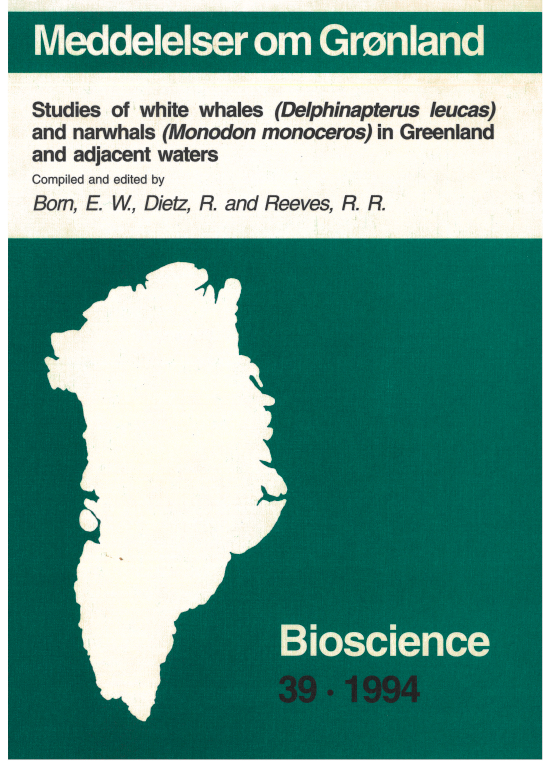Summer distribution and movements of narwhals (Monodon monoceros) in Eclipse Sound and adjacent waters, North Baffin Island, N.W.T.
DOI:
https://doi.org/10.7146/mogbiosci.v39.142544Abstract
Each year from 1987 to 1991 and in 1993, 3-6 helicopter surveys were flown in August to study the distribution and movements of narwhals (Monodon monoceros) in their summering grounds in western Eclipse Sound, Milne Inlet, Koluktoo Bay and Tremblay Sound. Their summer distribution is influenced by ice cover. They prefer waters that while giving them shelter from the wind, are over deep bottoms. Narwhals associate with ice in Eclipse Sound, a large expanse of water, while it persists, but do not frequent Tremblay Sound, a narrow fjord, when it has ice cover. When Eclipse Sound is ice-free, narwhals frequent smaller water bodies. Favoured areas in the ice-free season have in common the characteristics of being steep-sided and deep.
Narwhals associate in small groups, but these groups aggregate to form larger herds that generally move together. In the short term, movements and distribution are greatly affected by the near presence of killer whales (Orcinus orca), which narwhals seek to avoid.

Downloads
Published
Issue
Section
License
Coypyright by the authors and the Commision for Scientific Research in Greenland / Danish Polar Center/Museum Tusculanum Press as indicated in the individual volumes. No parts of the publications may be reproduced in any form without the written permission by the copyright owners.

